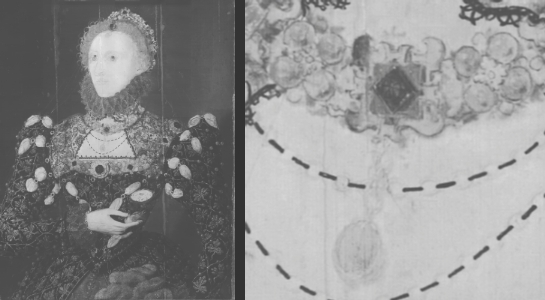TSR have been taking part in a major research project at the National Portrait Gallery which hopes to transform the understanding of early painting practice and the production of portraits in the Tudor and Jacobean periods. The project involves a comprehensive scientific survey of over 80 of the most important portraits from the Gallery’s collection dating from 1500 to 1620, for which infrared examination plays a key role.
The project has lead to new displays in the Tudor Galleries, including ‘Concealed and Revealed: The Changing Faces of Elizabeth I’. The fascinating example of the Portrait of Elizabeth I, NPG 200, drew considerable press attention. The Virgin Queen was first shown holding a serpent, later painted over with a rose, in the infrared reflectogram, which was shown in the display alongside an artist’s impression of the earlier composition.
The Pelican and Phoenix portraits of Elizabeth I have been reunited by the MATB study. The National Portrait Gallery’s Phoenix portrait was compared with the Walker Art Gallery’s Pelican portrait. The infrared examination, coupled with careful tracings from the painted surfaces, suggested both works derived from the same pattern, or cartoon.
www.npg.org.uk Pelican and Phoenix
Following on from the success of this work, the National Portrait Gallery organised a three day international conference, ‘Tudor and Jacobean Painting: Production, Influences and Patronage,’ held at the gallery and at the Courtauld Institute of Art in December 2010.
www.npg.org.uk MATB Conference
The MATB project has attracted funding from a number of bodies, recognizing the value of this technical approach for the study of this important collection of Tudor paintings.



